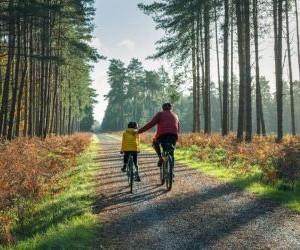Learn how to deal with punctures on long rides with prevention tips, repair techniques, and smart gear choices to keep rolling without stress.
HOW DO I PREVENT LOWER BODY STIFFNESS AFTER RIDES?
Lower body stiffness after rides is a common issue for cyclists, whether you’re a weekend warrior or logging pro-level miles. Tight quads, hamstrings, glutes, and calves can make post-ride recovery uncomfortable and slow down your progress. The good news: stiffness isn’t inevitable. With the right recovery strategies—covering stretching, hydration, nutrition, and active mobility—you can minimize soreness, improve flexibility, and accelerate readiness for your next ride. This guide breaks down science-based and practical methods to keep your muscles supple and your performance consistent.

Why stiffness happens after cycling
Cycling is a repetitive-motion sport. Pedaling hundreds or thousands of revolutions during a ride shortens and tightens certain muscles, while neglecting others. Quads and hip flexors bear most of the load, while hamstrings and glutes often remain under-activated. This imbalance contributes to stiffness. Add micro-tears from muscular exertion and dehydration from sweating, and you have the recipe for post-ride tightness.
The main drivers of stiffness
Stiffness is not only about muscle fatigue—it’s about physiology and biomechanics. Reduced blood flow post-ride slows nutrient delivery to muscles, while lactic acid accumulation and electrolyte imbalance worsen soreness. Limited stretching or mobility work compounds the issue over time, reducing range of motion and potentially leading to injury if left unchecked.
Muscle overuse and micro-tears from repetitive pedaling
Dehydration and electrolyte loss impairing recovery
Imbalanced muscle activation (quads vs glutes/hamstrings)
Reduced post-ride circulation slowing recovery
Understanding these causes helps target prevention strategies more effectively, ensuring you don’t just mask stiffness but address its root drivers.
Stretching and mobility routines
One of the best ways to prevent stiffness is to integrate post-ride stretching and mobility drills. These routines restore length to shortened muscles, promote circulation, and maintain joint flexibility. They don’t need to be long—10 to 15 minutes after each ride can make a big difference. The goal is consistency rather than intensity.
Essential post-ride stretches
Cyclists should focus on the hip flexors, quadriceps, hamstrings, glutes, and calves. Static stretches help elongate muscles after exertion, while dynamic stretches and foam rolling can enhance blood flow. Incorporating yoga poses like pigeon stretch, downward dog, and low lunge adds both mobility and relaxation benefits.
Hip flexor stretch: counters time spent in the saddle
Quad stretch: reduces front thigh tightness
Hamstring stretch: restores posterior chain flexibility
Pigeon pose: opens hips and glutes
Calf stretch: prevents Achilles tightness
Foam rolling, especially on the quads and IT band area, releases tension and improves recovery by stimulating blood flow. Mobility tools like massage balls can target smaller areas like the glutes or hip rotators. Making these routines part of your cycling ritual helps keep stiffness from becoming chronic.
Recovery habits beyond stretching
Stretching is vital, but recovery extends beyond mobility drills. Hydration, nutrition, and active recovery all contribute to how quickly your muscles bounce back. Cyclists who ignore these factors often struggle with recurring stiffness and plateaued performance.
Hydration, nutrition, and active recovery
Rehydrating with electrolytes immediately after a ride combats fluid and mineral losses that contribute to cramping and stiffness. Post-ride meals should combine carbohydrates to replenish glycogen with protein to repair muscle tissue. Omega-3 rich foods like salmon or flaxseeds also reduce inflammation. Light activity the next day—like an easy spin, swimming, or walking—boosts circulation and loosens tight muscles without adding strain.
Hydrate with water plus electrolytes to restore balance
Eat a carb-protein balanced meal within 60 minutes
Incorporate anti-inflammatory foods for recovery
Do active recovery workouts to maintain mobility
Prioritize 7–9 hours of quality sleep for tissue repair
When combined, these habits create a holistic approach to stiffness prevention. Instead of treating recovery as an afterthought, integrate it as part of your training plan. This ensures your lower body stays fresh and ready for the next ride.
YOU MAY ALSO BE INTERESTED






